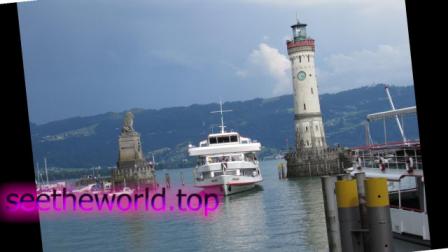To the west of Salzburg was the smallest Austrian province with a difficult to pronounce name – Vorarlberg .
Its main attraction is the Alps. The main source of income of this federal land is tourism. If Vorarlberg’s closest western neighbor , Tyrol, is ideal for downhill skiing, then here is a wonderful tourist climate for those who prefer a quiet rural holiday, romantic and a little sleepy.
Fresh alpine air, mirror lakes, landscapes untouched by civilization, peace and quiet are prepared for those who dream of at least a temporary escape from the hustle and bustle of big cities.
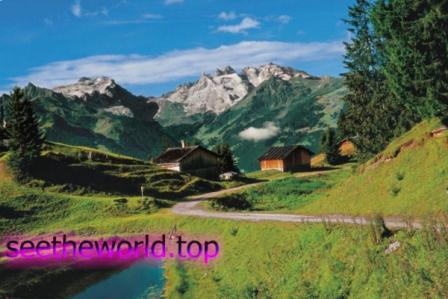
For many years Vorarlberg was isolated from the influence of Austrian culture and focused on its closest neighbors Germany , Liechtenstein and Switzerland . In terms of area, it is the smallest province of Austria after Vienna , which occupies only 2,061 square kilometers. The population is less than 400,000 people. Once upon a time, the local territories were inhabited by the Germanic Alemannic tribes. In the 15th century, the territory gradually came under the rule of the Habsburgs . Vorarlberg received the status of an independent Austrian province only after the First World War.
The capital of Vorarlberg is the city of Bregenz , the so-called “gate of Austria”.
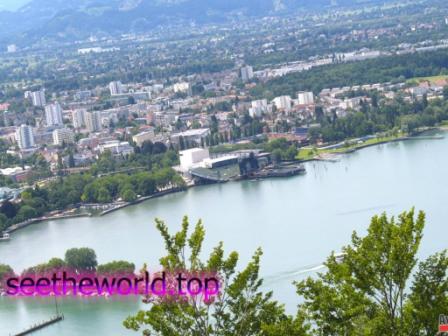
Large cities include Feldkirch and Dornbirn . The local population, in addition to the tourist business, in which more than half of the province’s residents work, is engaged in agriculture. Amazing dairy products are produced here, the taste qualities of which will appeal to all guests of this very small, but very cozy and hospitable federal state of Austria .
In the north of Vorarlberg , in the Bregenzer Ache valley , the Bregenz forest spreads out with many picturesque resorts. Bregenz is located at the foot of the Austrian and Swiss Alps, on the eastern shore of Lake Constance .
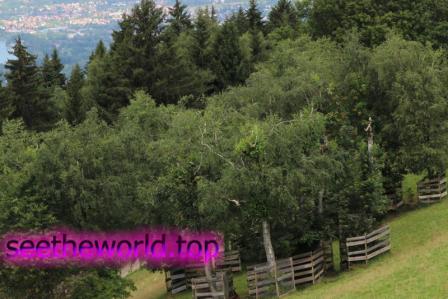
In the capital of Vorarlberg, the territories of four countries meet: Austria , Germany , Switzerland and Liechtenstein . Once upon a time, the ancient Romans founded the settlement of Brigantine, which was later transformed by the Alemanni into the city of Brancantia . The oldest part of Bregenz is the Upper Town or Oberstadt . Many historical buildings and remains of fortifications of the 13th century have been preserved here.
Inennstadt or Lower Town is much younger. There is a theater and a local history museum . The streets of the city, located on the shore of Lake Constance , are always shrouded in haze. Every summer from the second half of July to the end of August, since 1946, the popular Bregenz Art Festival has been held here . At this time, theater and opera performances, symphony concerts and exhibitions of painting and sculpture are held in the city.
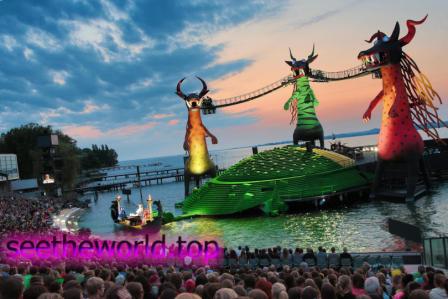
In winter, the surrounding areas are a real paradise for skiers. Vorarlberg’s resorts are the third most popular among outdoor enthusiasts after Tyrol and Salzburg . The Vorarlberg ski slopes are located around the Arlberg Pass in the Eastern Alps. Previously, Arlberg was completely cut off from the country and focused more on the neighbors of Germany and Switzerland . However, in the 19th century, a railway tunnel was built here, connecting Vorarlberg with the rest of Austria . The tunnel, 10,238 m long, is located at an altitude of 1,310 m and was the longest in Austria for a long time .
Today, the Arlberg area is home to several exclusive and popular ski resorts. The most famous of them are Stuben and Sankt Anton Arlberg .
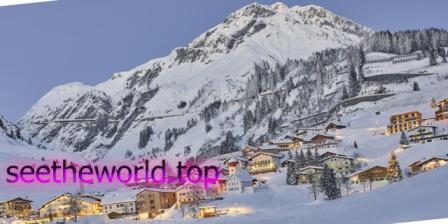
From the quiet village of Stuben (cozy living room) at the foot of Albonagrat, there are ski tracks to St. Anton itself . St. Anton Alberg is the largest tourist resort in Arlberg . Throughout the season, from November to April, countless ski slopes operate near St. Anton .
Experienced skiers will definitely like this region: here they can find an incredible number of really difficult “red” and “black” tracks, as well as wonderful unspoiled slopes with deep, fluffy snow. You can climb to their beginning accompanied by a guide or by helicopter.
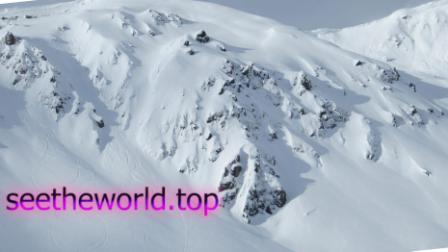
Beginners have at their disposal well-prepared “blue” and “green” tracks and many ski schools with their own skiing areas. And fans of freestyle will be pleased by the fact that there are several modern snow parks in the region, including one of the best in Europe, Nike Snowpark in Montafon .
Entertainment and active recreation
Vorarlberg is the birthplace of skiing and is still a technological leader, providing most of the innovations in the field of winter recreation. It was here that the first ski courses were opened in 1906, the first ski lift was built (in 1937), and the first mountain snowmaking systems were tested.
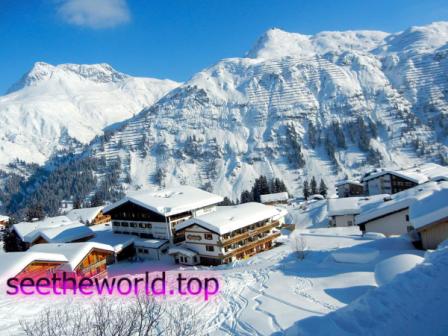
The most famous skiing areas are Lex and Zurs , located in the Arlberg . Montafon , Bregenzerwald and Brandnertal are not inferior to them . Both beginners and experienced skaters will be interested here.
At your service are hotels of various price categories, but, invariably, the highest level of service in its class. Vorarlberg’s designer hotels, which have original modern architectural solutions, fit well into the landscape and provide excellent conditions for recreation, deserve attention .
In the summer, the Vorarlberg lands are perfect for water sports, all kinds of cycling, paragliding, kiting and hang gliding, and of course all kinds of hiking, the most famous route being the three-day Green Trail around Löch and Zürs and walking in Bregenz in the forest
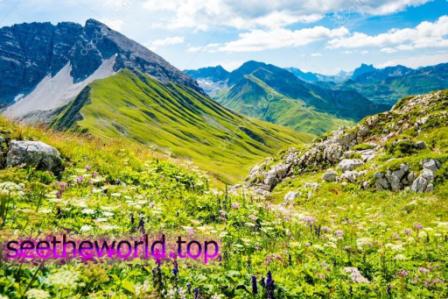
It is worth paying attention to St. Jacob’s Path , which is called Jakobsveg here . The destination of this route is Santiago de Compostela, the stops will be the Swiss Einsiedeln, or via Feldkirch, Liechtenstein and Toggenburg.
Gourmets will like the famous Bregenzerwald cheese, and lovers of railways and industrial tourism will pay attention to the Vorarlberg railway system , and everyone without exception will enjoy visiting the only workshop in the world in Riefensberg , where the traditional women’s costume of Vorarlberg – Juppe , which is rightfully considered one of the the oldest Alpine costumes that have come down to us.
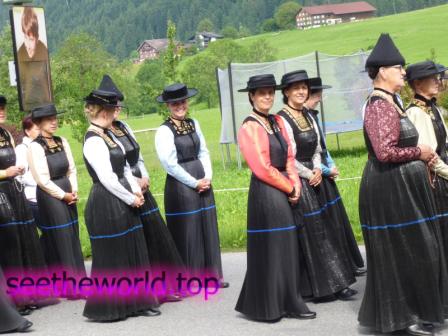
Despite its difficult accessibility, Vorarlberg is the most industrialized region of Austria . Textile products are produced here, most of which, including embroidery, are exported. The products of precision mechanics, watches and automatons produced here are especially popular – so much so that the name of the main character of the famous quest Syberia , the brilliant mechanic and designer Hans, became the name of this beautiful Austrian region, the majority of whose inhabitants consider themselves Swiss.
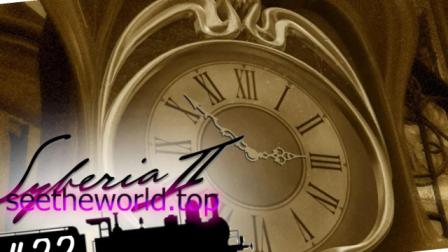
The villages also have excellent sports and entertainment complexes, shops (the most sophisticated shopping is, of course, in Leh and Zurs ), spa centers, massage parlors, beauty salons, cinemas, casinos, night clubs, discos, etc.
Local cuisine and wines
A vacation in Vorarlberg is a great opportunity to get to know the best dishes of Austrian cuisine, which are prepared here from natural farm products. This can be done both in fine dining restaurants and in cozy mountain huts. In addition, tourists will be able to taste excellent local wines, very tasty beer and the famous Austrian schnapps.
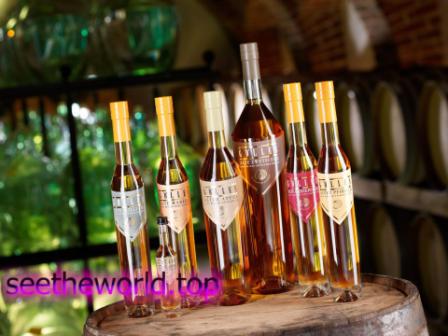
Family vacation
Little travelers will remember a trip to Vorarlberg no less than adults: here, as everywhere in Austria , children are treated with the most sincere friendliness. And, of course, there is plenty of entertainment for children. Ski schools have kindergartens where creative activities and outdoor games are held, as well as special skiing and snowboarding courses. There are game clubs and animation programs in the hotels, snow parks with trampolines, ice figures, etc. on the slopes and in the villages. In addition, the region has all the conditions for family time: toboggan runs, ice rinks, cleared mountain trails, fun fairs, spectacular shows with torches and fireworks, Motorcycle Museum in Feldkirch , mountain safari-zoo inBregenz and much more.
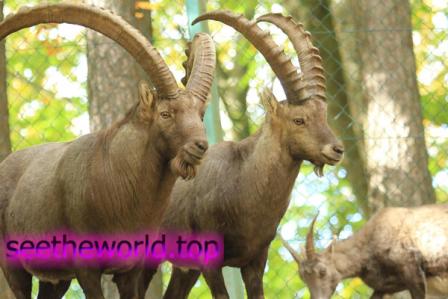
Art tourism in Vorarlberg
Vorarlberg consists of four historic districts: Bludenz, Bregenz, Dornbirn and Feldkirch, each of which has something to see.
The administrative center of Vorarlberg is the city of Bregenz, located on the shores of Lake Constance (Bodensee). In Bregenz, it makes sense to admire the city tower and visit the Safari Park on Mount Pfander.
Art tourists will pay attention to the palaces of the princely family Turn-y-Taxis and Vorarlberg-Landsmuseum, the basis of the collection of which is the canvases of Austrian artists.
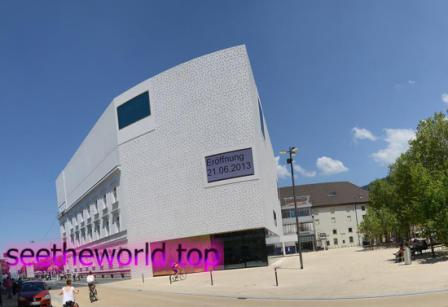
The House of Congresses and Festivals deserves attention, and weapon lovers will surely be interested in visiting the 17th century tower. St. Martinsturm (St. Martin’s Tower), which houses an informative museum.
Music lovers know about one of the most famous opera festivals in the world – the Bregenz Festival, about the village of Schwarzenberg and the city of Hohenems, where the annual Schubert Festival is held, dedicated to the musical legacy of the great Austrian composer.
Where to stay
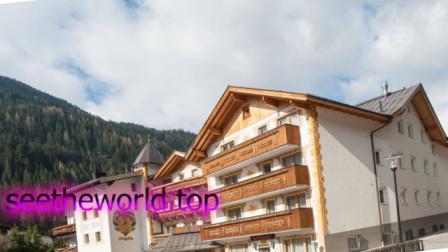
The most respectable villages in the Austrian Vorarlberg are Lech, Zürs and Oberlech , which are not inferior in terms of prices to the Swiss St. Moritz or the French Courchevel . They have the most luxurious 4-5 * category hotels, where the rich and famous stay. In the villages of Montafon or Stuben , the atmosphere is much less aristocratic, accordingly, the cost of accommodation in local hotels is significantly lower.
How to get to Vorarlberg
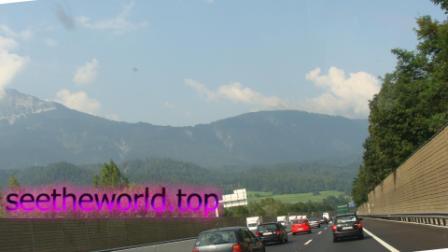
The federal state of Vorarlberg has a very well-developed transport infrastructure. There are various types of transport throughout the province, including trams and the metro. You can get to the territory of the province from Germany . Considering the proximity of the German border, the option is even more convenient if you want to get to the province immediately, bypassing the capital and other regions. There are regular buses from Friedrichshafen , Germany. If you still visited the capital and then decided to go to the westernmost province of Austria , you will have to travel by train for 8 hours.
Vorarlberg. Cities and resorts
Bregenz
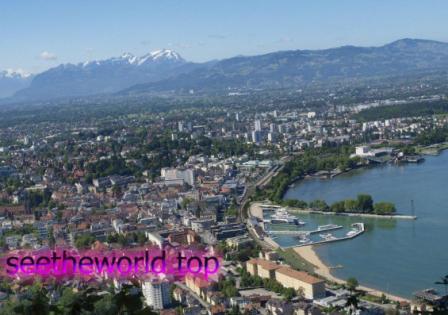
On the shores of Lake Constance, the third largest lake in Central Europe, is Bregenz, the capital of the federal state of Vorarlberg and an important port. Its long history goes back to the fortified Celtic settlement of Brigantion . Hence the name. In 15 BC, the Romans built a fortified castle and the city of Brigantium at this strategically advantageous location . The city was a major center of trade, important trade routes passed through it. But the Franks also owned the local lands for a very short time. The largest number of sights is located in the upper city. The ascent to this idyllic part of the city is through the old gates, decorated with coats of arms.
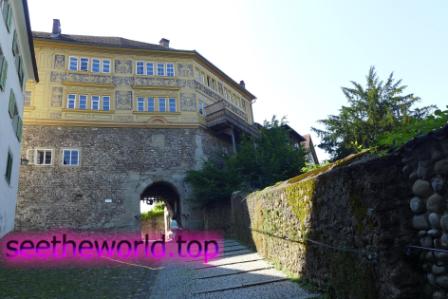
In the middle of historic streets and squares, the mighty Martinsturm rises as a symbol . St. Martin’s Church is the most important and tallest monument of the old city. It is the oldest Baroque building in Bregenz . The construction of the tower began at the end of the 16th century. and ended in 1602. But in order to enjoy the panorama of the city, you will have to climb up the stairs. There is a small museum in the tower.
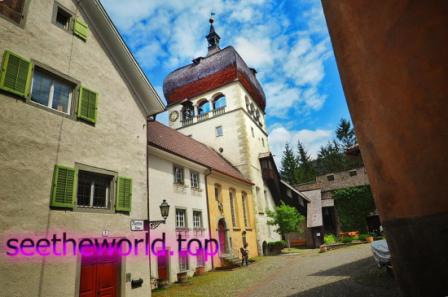
The star of architecture on Lake Constance is the House of Arts . It is located opposite the harbor, from where pleasure boats will take you to the medieval island town of Lindau and to the Flower Island – Mainau .

Church of St. Galla was founded a long time ago. It is mentioned for the first time at the end of the 11th century, that is, with the appearance of the first Christians in these parts. The church was destroyed many times, after which it was restored. The central part and the tower were built in the 14th century. Now it is the parish church of Bregenz . Different eras were reflected in the architectural form of the church, famous craftsmen participated in its creation. It is an interesting example of the art of architecture and interior decoration: a baroque pinch by Michael Kuen (1672), marble decoration by Abraham Bader, pews in choirs from Mererau Abbey, installed in 1808, an altar decoration of the middle of the 18th century, on which, in one of the cowherds, historians saw Archduchess Maria Theresa, with whose money the main altar was made of artificial marble. You should also pay attention to the body of the organ, the pipes of which were made by master Joseph Gabler. Large organs were replaced in 1974
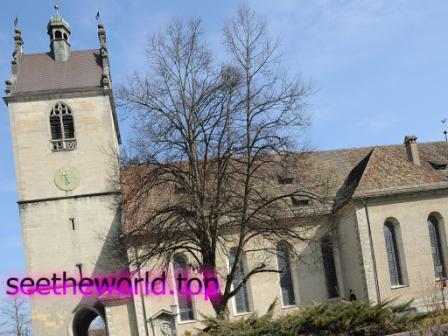
The Pfaender massif rises above the lake at one thousand sixty-four meters. You can climb to the top by marked paths, or you can take the funicular. The mountain offers a unique 360° view – a fabulously beautiful picture of the Swiss mountains above Lake Constance , the Allgäu Alps and the peaks of the Bregenz Forest up to the Widderstein massif on the border with the federal state of Tyrol . In the alpine park, you can observe flora and fauna: deer, hares, mouflons. In addition, the flight of birds of prey is demonstrated.
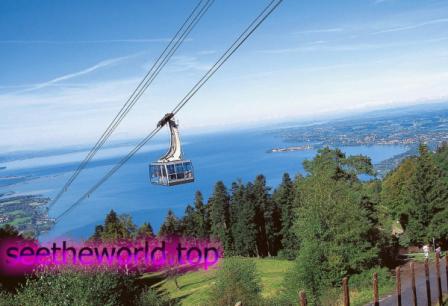
Theater in the Kornmarkt quarter . In 1954, the former indoor bread market on one of the central streets was converted into a hall for spectators. In 1994, it was modernized. The program includes concerts, operas, operettas, dramatic stops. The Vorarlberg Theater is constantly working on this stage .
The Vorarlberg Museum is located next to the theater in a beautiful turn-of-the-century neoclassical building. The exposition presents the history and culture of Vorarlberg from the prehistoric era. Archaeological exhibition, ceramics of the Bronze Age, harpoon of the Stone Age, finds from the Roman period. Historical traditions: folklore, costumes, wooden sculpture, cult objects and tools. Paintings by local artists, including many paintings by the wonderful portraitist Angelika Kaufmann (1741-1807), and paintings by romantic artists. An interesting collection of Ephesus sword heads.
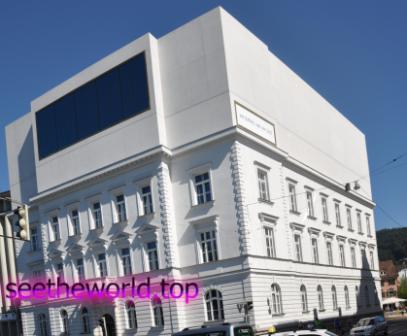
The Palace of Congress was opened in 1980. In the height of the season, it has a lot of visitors, especially when the annual festival is held. A giant stage under the open sky, a huge hall on the shore of the lake. In case of bad weather, there is a closed hall. On the Wiener Symphoniker Platz you can see the largest fountain in Vorarlberg . A minigolf course and a music pavilion are nearby.
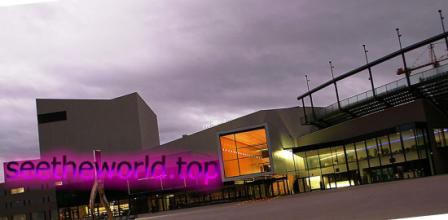
The contemporary art gallery is located next to the Pfender station . The gallery hosts exhibitions of modern masters working in various genres: sculptors, painters, architects and designers. Mobile exhibitions. Library. Bar and shop.
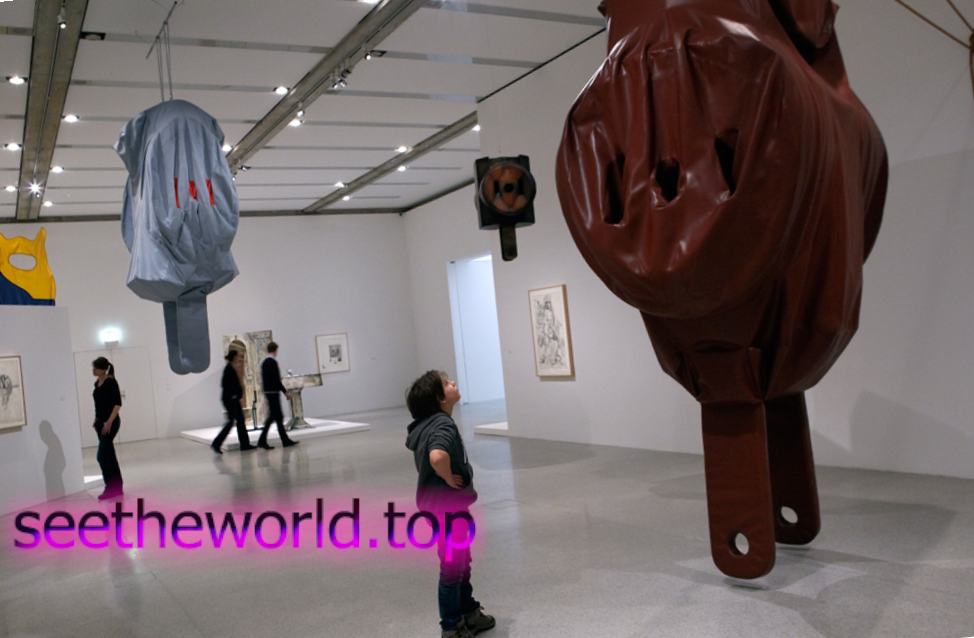
The lakeside chapel (seekapelle) was built in the 17th century. on the site of the former military cemetery and dedicated to St. George Altar in Renaissance style. Memorial plaque on the bell tower in memory of the victims of fascism.

It should also be noted the gates of the upper city with the coats of arms of the Counts of Bregenz and Vorarlberg . On the outside, on the Epona stone of Celtic origin, there is a copy of the image of the goddess, the patroness of horses. The original is in the local museum.

Near the Martin tower: a half-timbered house built in 1662, which housed the city hall ; a large former prison building, built in 1857 on the ruins of the Montfort-Bregenza castle , which now houses the Office of Historical Monuments , a hospital for apprentices with a turret and beautiful frescoes on the facade.
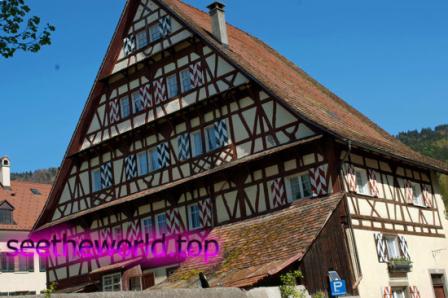
On the beautiful square of Ehre-Guta (Ehre-Guta) is the Montfort fountain , in honor of which the traditional washing of wallets is held every year on Wednesday of the first week of Lent, after which the most significant events of the past year are described in poems. Next to the fountain is Deuring Castle , built by the famous architect Michael Kuen.

The Neo-Gothic Church of the Most Sacred Heart was built in 1905 mainly with donations from ordinary citizens. Inside it there are Gothic altars and an organ with a beautiful sound.

Nearby is the Thurn und Taxis palace , which belonged to the Thurn and Taxis families until 1915. Then the palace became the property of the commune, and it housed an artist’s workshop in which exhibitions are regularly held (Kuenstlerhaus). There is also a beautiful park with many exotic plants.
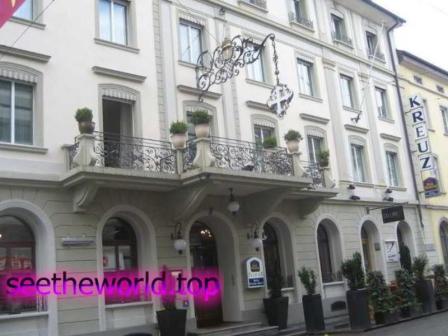
Quiet streets, courtyards with arcades and wooden houses preserve many evidences of the historical past of the city. Quite a pleasant little pedestrian area. The heart of the quarter is the small cobbled square Leuthubel . Maurachgasse and Kaiserstrasse streets lead to the lake. Routhausstrasse leads to the building of the city hall, the beauty of which is a vivid testimony of the wealth of the city.
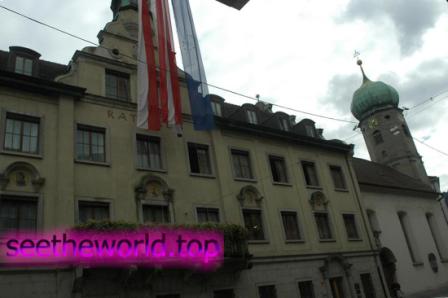
Today, this city, founded more than 2,000 years ago, with its symbol – St. Martin’s Tower in the medieval city center – has become a Mecca for fans of modern architecture. Such architects as Hans Hollein, Jean Nouvel and Peter Zumthor, as well as the Association of “Vorarlberg Architects” in the recent past made a great contribution to the design of the modern appearance of this city.
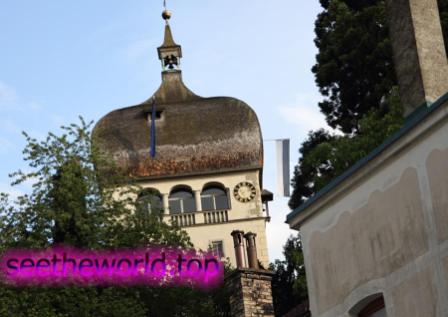
More than 100,000 people come to Austria in the city every year for the festival, an endless series of concerts, operas, theater productions and fireworks. The pearl of the first magnitude in the city’s cultural program is the Bregenz Festival . As part of the festival, for more than half a century, first-class directors have staged high-class operas on the stunningly beautiful Lake Stage , accompanied by the Vienna Symphony Orchestra – the “house orchestra” of the Bregenz Festival.
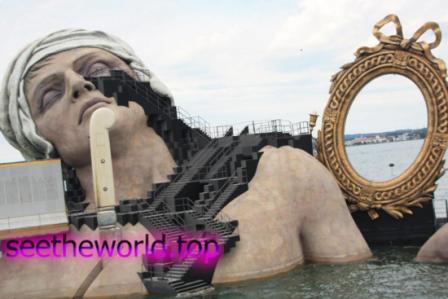
In the non-festival time, hundreds of exciting events await you here every year – exhibitions, concerts, or the internationally popular ” Bregenz Spring ” dance festival. The festival was held for the first time in 1946. Technical perfection, scenery and effects on the largest stage on the water contrast with the evening waters of the lake and the calm nature. The stands for spectators have about 6,800 seats.
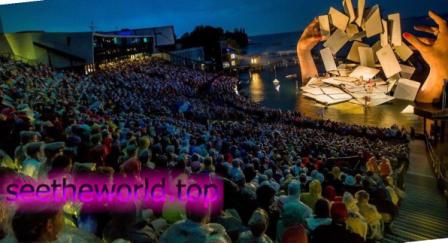
Active sports will also bring a lot of pleasure to the guests of the city: cycling, biking, tourism, tennis, paragliding and all types of water sports.
Feldkirch
The city of Feldkirch spread out on the banks of the Ill River, a tributary of the Rhine. It is located in the western part of Austria and belongs to the federal state of Vorarlberg . The border with Liechtenstein lies three kilometers from the city . The distance to the capital of the province is 35 kilometers, to the capital city of Austria – 660 kilometers. Feldkirch’s height above sea level is 458 meters. The city territory is divided into seven districts.
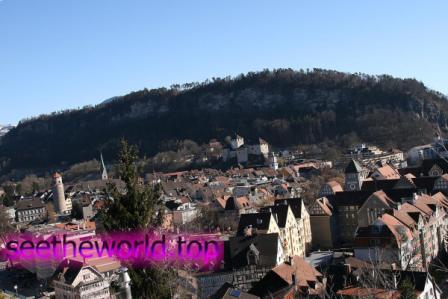
An extensive network of railways and highways connects Feldkirch with settlements in Austria and other European countries. According to documentary sources, it became known about the city in 830. In those days it was called Veldkirichum . Counts of Montfort became its owners in 1190 . A few years later, in 1218, the urban settlement was transformed into a city. In 1375, the Habsburgs became its new owners .
Despite the fire that engulfed the city in 1697, the main part of the ancient buildings survived and has been preserved to this day. Among them: Schattenburg Castle , Town Hall Building , St. Nicholas Cathedral , Katzenturm Tower .
The castle was built in the second half of the 13th century in 1260 and was the residence of the Counts of Montfort dynasty . Currently, this building is the most successfully preserved among the castles of Vorarlberg . The museum of local history found shelter within its walls .
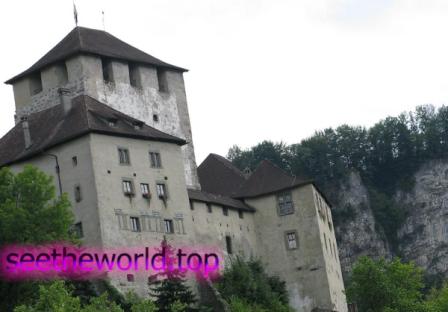
The building of the town hall was erected in 1493. Its facade is decorated with wonderful ancient frescoes.

The Katcenturm tower is also known as the cat tower. It was built in 1507 and is one of the 4 perfectly preserved towers of the fortress walls of the city.
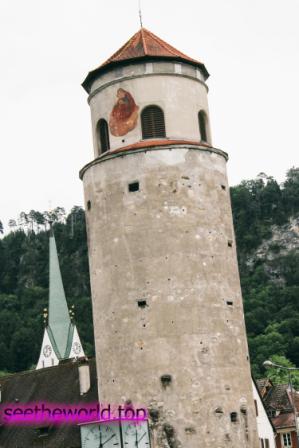
No less famous is the Cathedral of St. Nicholas, which was rebuilt from an ancient church in 1472. The building is made in Gothic style. The altar of St. Anna, located inside the premises, dates back to 1521. Its creator is Wolf Huber , who was born in Feldkirch and was famous for his skill as a painter and sculptor in the Middle Ages.
The great structure of the cathedral is also the Feldkirche parish church , the first mention of which dates back to 1287. Fires caused some losses to the cathedral’s Romanesque architecture, and the introduction of Gothic elements gave the cathedral its current appearance. The cathedral is recognized as the largest Gothic building in Vorarlberg . The reconstruction of the cathedral lasted until 1478 and was successfully completed by the architect Hans Sturn . Beautiful interior, several outstanding works of art: Pieta (Pieta – in visual arts, the scene of the mourning of Christ by the Mother of God) by Wolf Huber, a master of the Danube School, a native of Feldkirch; stained glass windows by Martin Heusl; the guardians are made of wrought iron, one of the most beautiful in the country.

Back in the Middle Ages, the city was a major educational center. The Jesuit College , which was built in 1649 and was called Stella Matutina , still operates today. The famous writer Arthur Conan Doyle studied in its walls between 1875 and 1876 . Now it is the Feldkirch Bundesgymnasium . In addition to it, there are 7 other large educational institutions operating in the city.
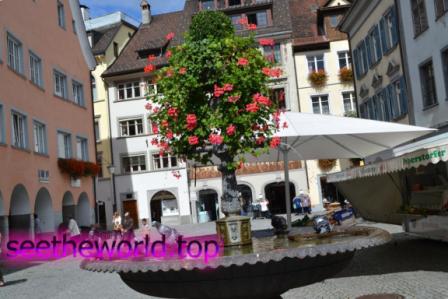
The conservatory is located on the opposite bank of the Ill River in the former Jesuit school. A beautiful building of the beginning of the century. In 1938, the Nazis closed the school and located in it first a financial school, then a military hospital. In 1946, the building was returned to the church, and in 1977, it was rebuilt again to house a conservatory, which annually receives about 400 students.
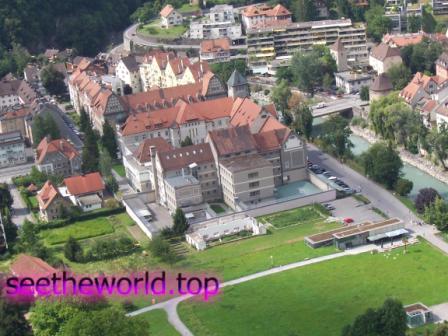
Amberg Castle . You can get to the castle on the Weierweg or turn right from the station. Emperor Maximilian visited the castle . It was built in 1502 by the mayor Felix Merklin . In 1535, the emperor’s illegitimate son, Colonel Friedrich Max, became the master of the castle . In the 17th century the castle was owned by the wealthy von Furtenbach family . Now it is a private boarding house.
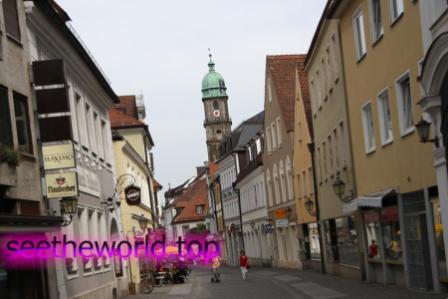
Next to the cathedral stands the current building of the prefecture, in which in the 17th century the Jesuit brotherhood was located. Closer to the station is the former Capuchin monastery (1605), where the most famous member of the brotherhood was Father Fidelis, killed in 1622 and canonized a century later.

Liechtenstein Palace is located on Schlossergasse, at its intersection with Kreuzgasse. A very beautiful building in the very center of the old town; was the residence of the princes of Liechtenstein. Construction began in 1658 and it was built as a ducal palace. Construction was completed in 1697.

Arlberg – Arlberg
A high-mountainous area, which is very much loved by all Austrians. The total length of tracks: 260 km, the longest track: 8.5 km, the length of artificial tracks: 26.5 km,
cross-country trails: 22 km, 86 lifts.

Resorts Lech, Zurs, Stuben. There are snow cannons. Ski season: December – April.
Nearest airports: Zurich (200 km), Innsbruck.
Lech – Lech
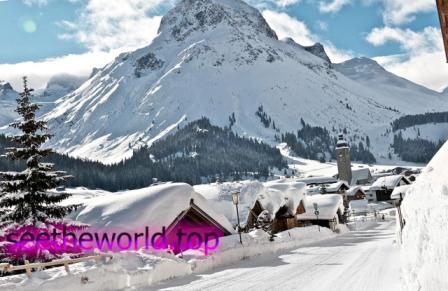
Perhaps this is the most significant resort in Austria in terms of its tourist opportunities . It is famous for its special microclimate, which allows maintaining a constant, beautiful state of snow on the slopes throughout the year.
A large number of hotels in Lech, Oberlech, Stubenbach and Zug. More than 250 hotels, boarding houses and rooms in the houses of local residents. First-class sports facilities. Prices for accommodation in hotels, available in the summer, when the number of tourists decreases, become completely unavailable in the winter.
Zuers – Zuers
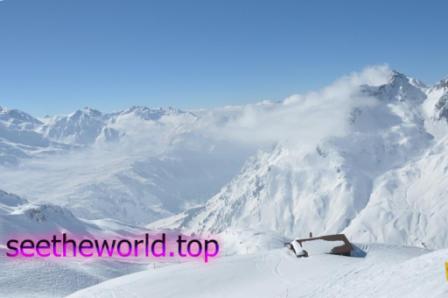
A resort for the rich. It was from Zürs that the development of skiing in Austria began (the first ski school in Austria was opened here , and the first ski lift was built here). It is easy to get here from Lech and St. Anton . There are many vacationers from Germany in Zuers , who only need to cross Bavaria to get here. There are few hotels, but almost all of them are luxurious (on average 500-2500 shillings per person).
Lech: ski resort in Vorarlberg
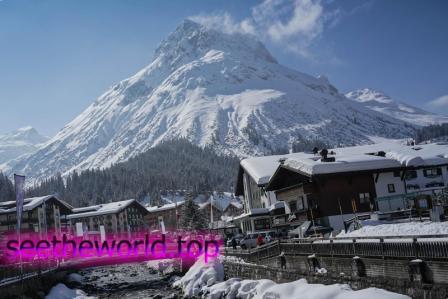
The mountain valleys around Leh have been inhabited since ancient times. This mountain village is believed to have existed since the middle of the 7th century. It is unlikely that the inhabitants of Likka (as it was called in the ancient chronicles) guessed what a brilliant future awaited their wasteland. The picturesque village is conveniently located in a valley near the confluence of the mountain rivers Lech and Zürsbach . From the east, the valley is surrounded by the Rüfispitze mountain massif (the highest height is 2,632 m), and from the west rises the mountain Kriegerhorn (2,127 m).
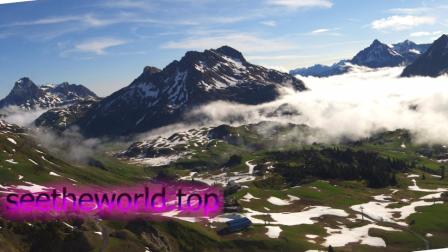
A little further south and higher up the valley of Zürsbach is the village of Zürs , and to the north of Lech, Overlech is hidden in a cozy valley . These three settlements are the basis of the resort of Lech, but in recent years it has grown so much that it has included the mountain villages of Anger, Omesberg, Strass, Dorf, Tannberg, Zug and Stubenbach. In fact, they are separated from each other by a maximum of five minutes by car on a fairly good road. You can only get to Oberlech by lift.
Leh: mountain skiing, snowboarding and heli-sky
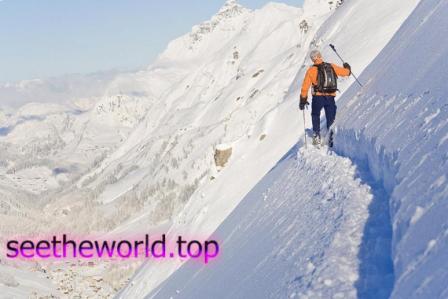
The height difference on the ski tracks is from 2800 to 1450 meters. The valley where the resort is located has a special microclimate, thanks to which natural snow is preserved throughout the skiing season from the end of November to mid-April. The length of ski tracks is 276 kilometers, they are served by 85 lifts and cable cars. The slopes of Leh are considered ideal for teaching beginners and family skiing. It is not for nothing that sportsmen’s development of the Alps began here. It is believed that the first ski lift was built in Zürs. The gentle valley between Lech and Oberlech is recognized as an ideal course for training skiers, although according to the classification it is “blue”.
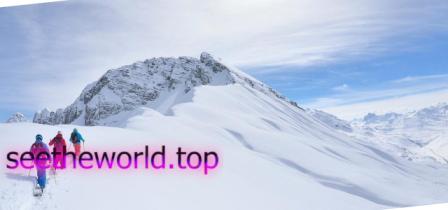
The guests of Leh feel a special love for the White Ring. This is a closed route with a length of 22 kilometers. It connects Lech, Zürs, Zug and Oberlech. An amateur downhill skier needs to spend several hours on it, a professional completes the track in an hour (not including climbs, of course). The ring starts at the top of Rufikopf , where skiers climb on two modern “gondolas”. After admiring the wonderful views from a height of 2,362 meters, they descend to Zurs on the “blue” and “red” tracks to a height of 1,716 meters. Then climb Kriegerhorn again and descend to Lech from the west. Polonyna is wide, with a gentle slope, a large number of turns.
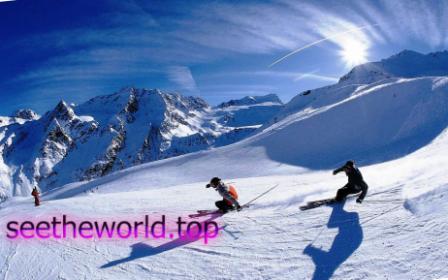
The foot of Kriegerhorn belongs to snowboarders. A special Schlegelkopf-Hang slope with a 1,200-meter-long “pipe” is equipped for them . Two more areas of extreme skiing are Monenflu mountains (2,542 meters) and Zuger-hochlit (2,377 meters). “Red” and “black” tracks on their slopes wear their colors quite deservedly. In addition to cultivated tracks, there is quite a lot of snowy wilderness for lovers of such extremes.

Lech is the only ski area in Austria where heli-sky is allowed. This is a descent from the top, where skiers are delivered by helicopter. Mandatory group member is a guide. Helipads are located in L’hu and Zurs, tourists are dropped off on the tops of the Melzac and Schneetel mountains . This class is for qualified skiers who have experience of skiing in the wilderness.
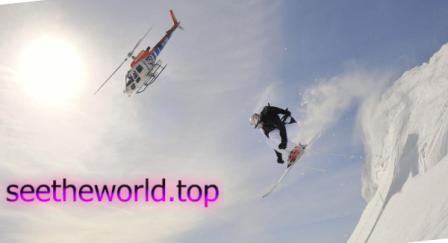
What to do in the Austrian village of Lech?
There is something to do in Leh even for those who do not know how to or do not like to ski. Paved cross-country skiing and hiking trails. Beginners are taught by 4 ski schools and a riding school. Travelers can climb the nearest peaks accompanied by a guide, admire mountain lakes, go sledding, and play bowling.
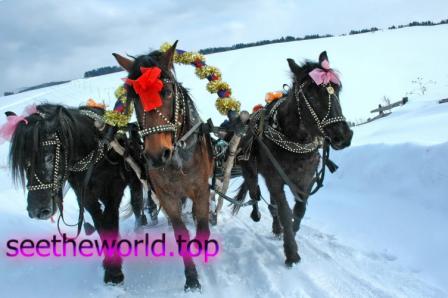
Lech is among the members of the elite club of Alpine resorts Best of the Alps. The rest of its participants are Austrian Kitzbühel , St. Anton and Seefeld , Swiss St. Moritz , Davos , Zermatt and Grindelwald , Italian Cortina d’Ampezzo , French Chamonix and German Garmisch-Partenkirchen.. Some cities hosted the Olympics. Today, they guarantee the highest quality of service and sports tracks. Film stars and aristocrats rest here, so the prices in hotels and restaurants in Leh are very serious. They come here to relax, not to set records. Moreover, relax leisurely, with taste, enjoying every minute.
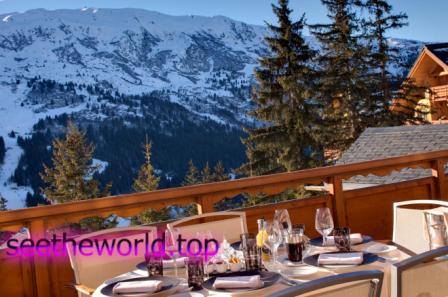
A cinema, saunas, swimming pools, ice rinks, indoor courts, and even a disco are available for guests of Leh. At the same time, movement by motor vehicle is restricted. In Oberlech , for example, it is simply prohibited. Cars remain in the parking lot below, while tourists and goods enter Oberlech through the tunnel system. In 2004, Leh itself received the title of the most beautiful alpine village of the year. Here, the ecology is carefully protected, thanks to which the air in Leh surpasses even alpine standards in purity.
Zurs: ski resort in Vorarlberg

The tiny alpine village of Zürs am Arlberg, located at an altitude of 1,720 meters among the mountain peaks, together with Zug, Stubenbach, Oberlech and Lech, is part of the world-famous ski region Arlberg , located in the west of Austria . The village of Zürs is world-renowned for its black pistes, the world’s best ski schools with over 230 first-class instructors, adapted courses for beginners, and extreme descents from hard-to-reach slopes that can only be reached by helicopter. In addition, the well-known Kindergarten “Little Zurs” is located hereand special classes for toddlers are available. But the resort is not limited to this, there is a huge variety of everything that is so necessary for a full-fledged rest.
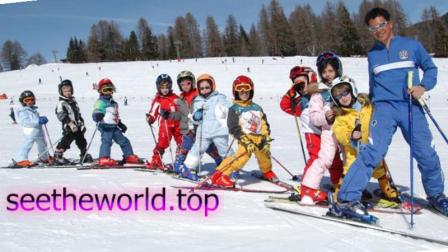
Also, Zürs, along with other resort towns of the Alberg region, is the most chic alpine town that gathers winter sports enthusiasts from all over the world. Here, excellent conditions for recreation are advantageously combined with the natural beauty and historical traditions of the alpine village, forming a real idyll. At Zurs, you can completely immerse yourself in the atmosphere of coziness, incomparable hospitality and exceptional service, which will literally absorb guests and make them feel at home.
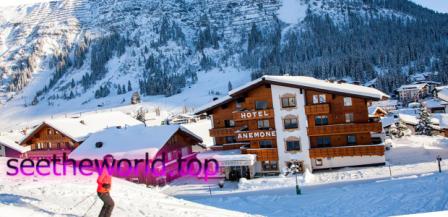
Small hotels – 22 hotels, spicy cafes and exquisite restaurants fully correspond to the main motto of the resort: the same time – the same place – the same people. Therefore, it is safe to say that everyone here knows each other very well. Such hospitality is the main feature of the resort, and has a great impact on the entire vacation. Vacationers who came here for skiing experiences will be simply surprised and stunned, as here at their service: a toboggan run of natural origin, an ice rink, large differences in altitude, a convenient system of lifts, well-groomed slopes, in general, everything you need for a real full-fledged winter rest in the mountains, alone with nature. Thanks to this, as well as a huge choice of entertainment, Zürs together with Lech are representatives of the best group of alpine hotels –“The Best of the Alps” .
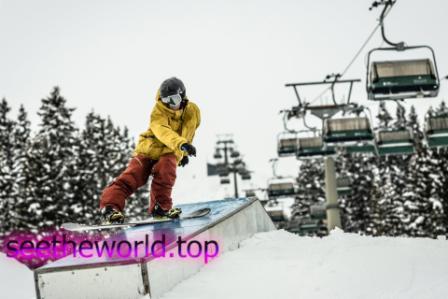
The resort operates successfully throughout the year. However, tourists from Ukraine prefer to rest here in the period from December to January. The time difference with Kyiv is one hour.
Guests can visit numerous restaurants in Zürs, where they will be offered dishes of local and international cuisine.
Hotel Albona has a gastronomic restaurant Die Ente in Z? Rs .
There are several kindergartens for children over 2.5 years old on the territory of the resort. Also, there are children’s ski schools here. The program of children’s clubs includes visits to a children’s ski school, outdoor and indoor games, sledding and skiing, and much more. All children older than the specified age can practice in ski schools and kindergartens under the supervision of a nanny.
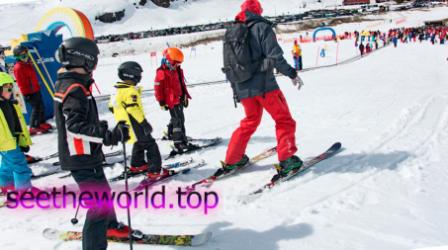
The Arlberg region is represented by trails, the total length of which is 440 kilometers.
There are also tracks for cross-country skiing, their length is 4 kilometers. The route starts from the Trittkopfbahn railway station and leads to Flexenpass . A 15-kilometer long cross-country ski track is available in the protected Zugertala natural area in the village of Leh . This track runs along the Leh River .
The height differences are from 1450 to 2800 meters. The resort has a snowboard fan park.
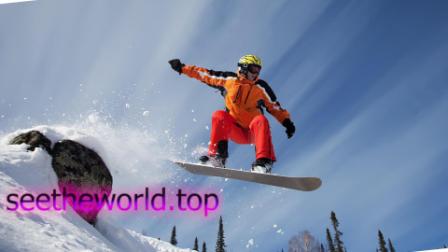
There is a well-known ski school in Zurs, which employs more than two hundred professional instructors. By the way, children over the age of four can study at the school.
Here is the main pride of the resort – a toboggan run of natural origin, which is located between Oberlech and Lech . The sled track is illuminated in the evening, so skiing here will be very exciting and will give you many unforgettable emotions.
In winter, guests can go rock climbing, snowboarding, snowshoeing, and curling.
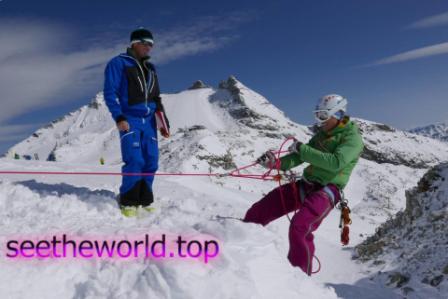
In the summertime, you can descend from the mountain with a parachute, play mini golf, golf, tennis, make an exciting hike in the mountains, ride mountain bikes or do sports walking.
Hotels Zürs am Arlberg
Thurnhers Alpenhof De Luxe 5 *
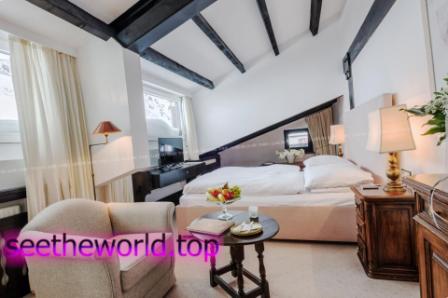
The hotel is an oasis of peace. Therefore, the vacation spent in this hotel will become a real unforgettable winter fairy tale. By opening the hotel, the owners realized their long-standing dream of owning a house in the mountains. The main concept of the hotel is that the hotel strives to become a place where you can not only meet old friends, but also find new ones. The hotel is open from the beginning of December until the beginning of May. Based on this, we can say that the hotel is an exclusive place in the Alps. The hotel staff carefully preserves family traditions of hospitality, so your vacation here will be simply unforgettable.
The hotel was built in a traditional alpine style. It is located among snowy slopes and ski tracks, on the territory of the famous Zurs ski resort.
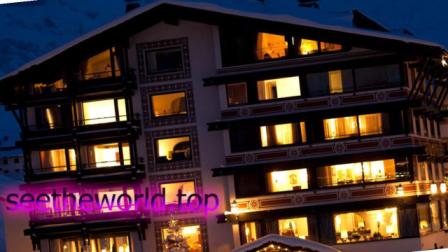
The staff and owners of the hotel do everything possible to ensure that the guests enjoy their vacation as much as possible and remember it for the rest of their lives. This is largely helped by the hotel’s surroundings, nature and a huge amount of entertainment, thanks to which the hotel has become famous all over the world.
You can get to the hotel in several ways: order a transfer by private plane, by train or by car. The hotel is located in the western part of Austria. The airport closest to the hotel is in Innsbruck, and the Langen am Arlberg train station is 14 kilometers from the hotel .
Zurserhof 5 *
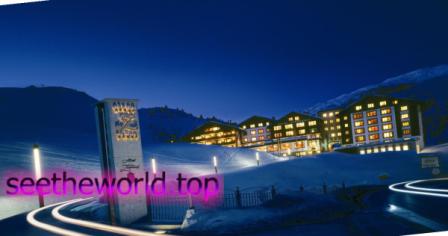
Hotel Zurserhof 5 * Zurs am Arlberg has a great location. Since it is located near the center of the Zurs ski resort, surrounded by mountain slopes. The hotel boasts aristocratic roots. Back in 1920, the former owner of the hotel, Count Tattenbach, took care of the luxurious interior decoration. In 1955, the hotel became the property of the Skardarasy family . Today, the hotel is managed by the third generation of the family. It was this generation that created a harmony of modern amenities and the hotel’s aristocratic past. Today, the hotel is a cozy and comfortable oasis of rest, where lovers of active recreation and those looking for peace and quiet can relax.
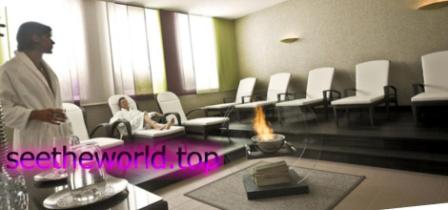
The hotel is located in the immediate vicinity of all transport nodes, in the west of Austria . Innsbruck Airport is a one and a half hour drive, Zurich Airport is a two hour drive, Munich Airport is a three hour drive and Langen am Arlberg Train Station is a twenty minute drive.
According to the accommodation rules, the Zurserhof 5 * hotel must comply with the dress code. That is, in all public areas of the hotel in the evening, women should appear only in evening dresses, and men in suits. For dinner, a man must wear a suit with a tie.
Lake Constance
This natural attraction, which has become one of the business cards of touristic Austria, is located precisely in the province of Vorarlberg , and it can without exaggeration be called the pearl of this region, and of the whole of Europe.
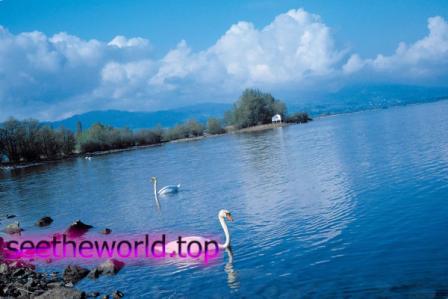
This lake also has a second secret name – the Swabian Sea. And here I would like to draw attention to the word “sea”. Comparison with this category of bodies of water implies a large size of the named “sea”, and indeed it is: the area of Lake Constance is 500 square kilometers. The lake also boasts a depth of up to 90 meters.
It is not by chance that the lake is called Swabian either, it is an ethnographic and historical toponym formed from the name of the tribes that historically inhabited these lands.
Treatment and rest on the lake
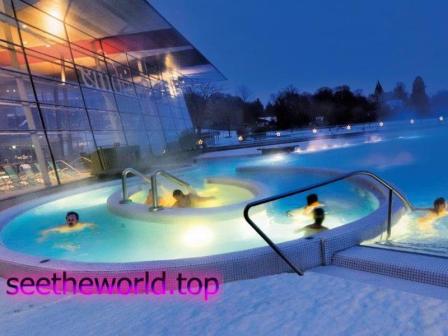
Lake Constance is a wonderful place for recreation. The mild climate and lack of wind will allow you to experience all the charms of the island on the water. And the wonderful landscapes and views of the snow-capped Alpine peaks that open from the lake will forever remain in the memory of tourists and will become the heroes of many of the most beautiful photographs. For those vacationing on the lake, a wide range of entertainment services is offered, including surfing. The lake boasts the presence of hot springs and many hospitals located along the coast. So you can safely go to Lake Constance to improve your health.
Islands of Lake Constance and their attractions
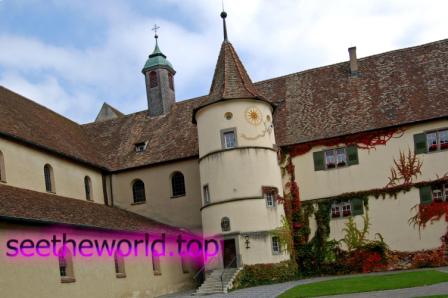
The lake is known not only for its nature, but also for its three islands and the attractions located on them. There are three islands on the lake. The largest island of Reichenau has gained popularity for two reasons, firstly due to its flora, the island has favorable conditions for growing vegetables and fruits, including exotic ones, and secondly, due to the Benedictine abbey located on the island. Its foundation dates back to the early Middle Ages and dates back to the 8th century, as an active monastery existed for a whole millennium until the 18th century, however, many monastic buildings have survived to the present day. Due to the presence of this historical object on the island, the island is still called a monastic island.
Another island of the archipelago can also be given the unofficial nickname “flower island”.
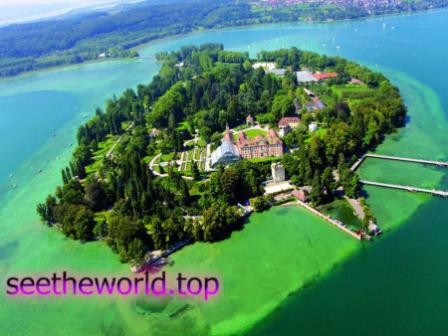
Its official name is Mainau . The island is famous for floriculture, here you can find many different flowers, including exotic ones, their combination amazes the imagination, even the eyes dazzle from such a variety.
The third island of Lindau is the smallest island of Lake Constance, but no less interesting than its two siblings. One of the most interesting towns in Austria is located here, immersing tourists in the history of such a phenomenon as a medieval city. The town was founded in the 8th century and has preserved many landscapes and features of the medieval era.
